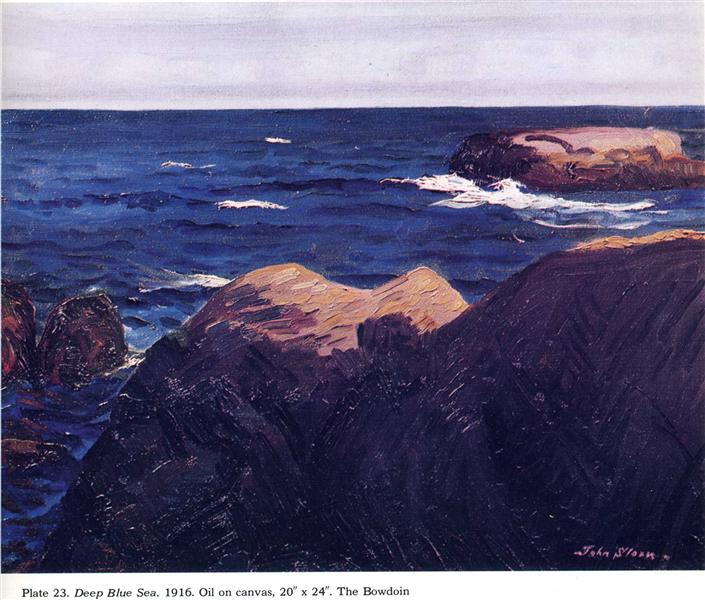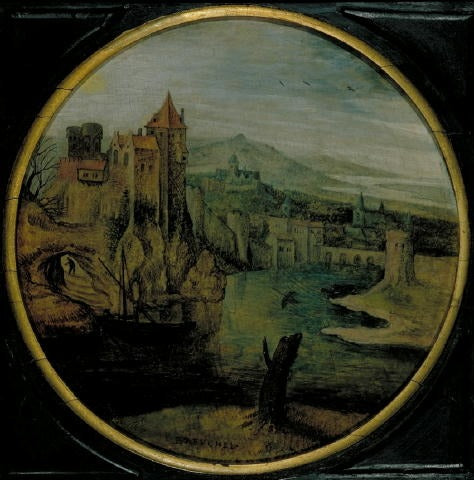Description
The work "Rear Patios - Greenwich Village - 1914" by John Sloan is a fascinating example of the artist's approach to everyday life and modernity in the context of New York of the early twentieth century. As a member of the group of artists known as the Ashcan School, Sloan masterfully captures urban realities and ephemeral moments that make up the experience of life in the city. In this painting, the viewer is transported to a typical Greenwich Village environment, where rear courtyards become a space for social interaction and observation.
Compositionally, the work is characterized by a fairly organized structure, in which the elements of the background and the foreground are combined to create a feeling of depth. The perspective is at an angle in which the viewer seems to be a casual observer of the scene. This allows urbanity - represented by the variety of buildings and the disposition of objects - be filled with a particular dynamism. This point of view not only implies the spectator, but also hints the proximity of urban life that he was so admired.
The use of color is another notable aspect of the work. Sloan uses a palette that evokes the warmth of the afternoon, with earthly tones and saturations that provide vibration to the scene. The shadows play an important role, since they add dimension and structure, while suggesting the luminosity of the afternoon sun that bathes the rear courtyards. This manipulation of light and color is a characteristic of Sloan, who worked tirelessly to convey the atmosphere and emotionality of their themes.
Regarding the characters, the work reflects everyday life through the subtle inclusion of human figures. Although they are in the background, people's silhouettes are in an intimate environment, participating in activities that suggest a community life rich in nuances. These anonymous characters contribute to the sensation of a lived and shared space. In this sense, Sloan is not limited to representing an urban landscape, but humanizes the environment through the inclusion of these individuals, capturing the essence of a vibrant community that lives in the city.
The historical and social context in which the work is also is relevant. The 1910s was a period of intense social and cultural changes in America, where urbanization began to transform the fabric of society. The Greenwich Village of that era was a hotbed of artistic creativity and progressive thought, a place where artists, writers and thinkers converged, in search of new forms of expression. "Rear Patios - Greenwich Village - 1914" not only documes a particular moment in time, but also highlights the spirit of an era that sought to redefine the identity and space of urban life.
In conclusion, Sloan's work is a testimony of artistic ingenuity and its ability to capture the essence of a community through the meticulous observation of its surroundings. Greenwich Village's rear are not simply a scenario, but a reflection of human life and interactions that shape the city. Through its technique, color and composition, Sloan transforms the everyday into something remarkable, consolidating its place in the history of American art and in the collective imaginary of a New York in constant evolution.
KUADROS ©, a famous paint on your wall.
Hand-made oil painting reproductions, with the quality of professional artists and the distinctive seal of KUADROS ©.
Art reproduction service with satisfaction guarantee. If you are not completely satisfied with the replica of your painting, we refund your money 100%.











